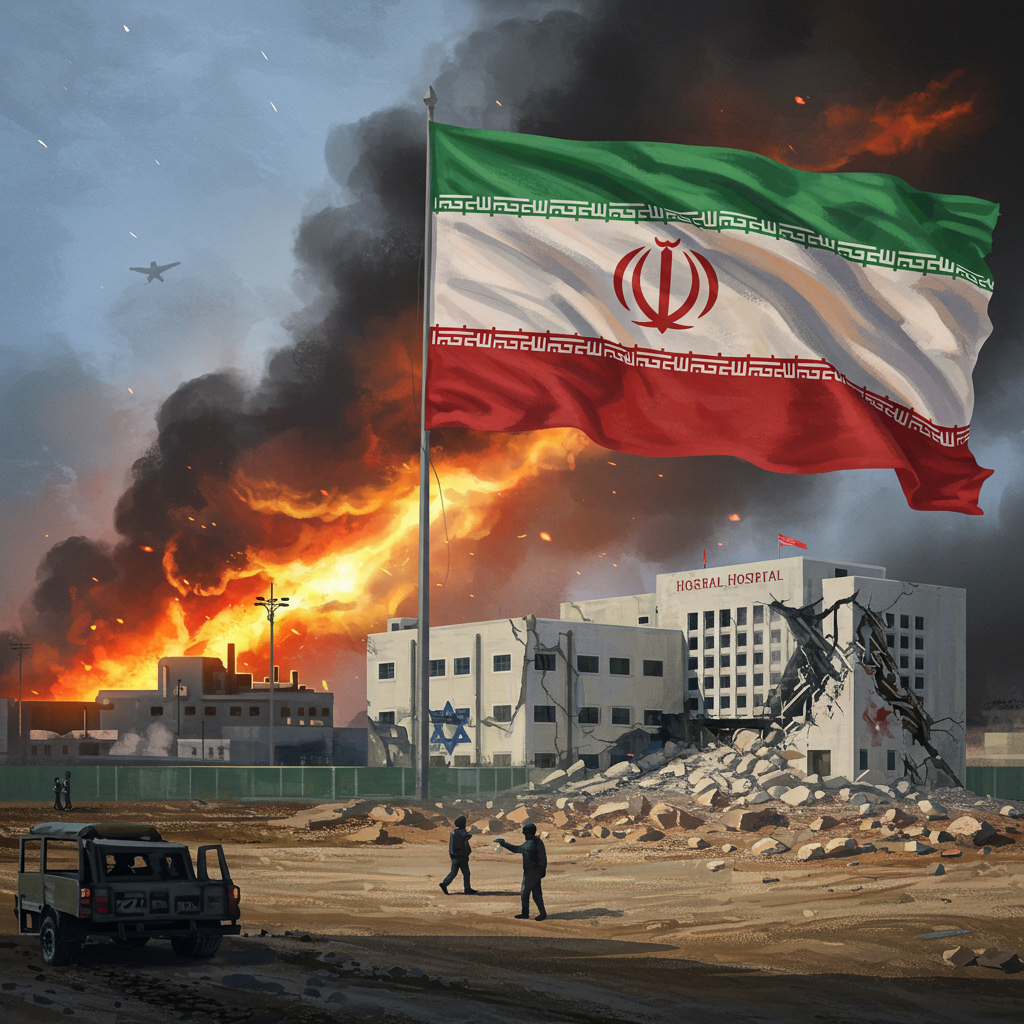The week-long air war between Israel and Iran dramatically escalated on June 19, 2025, with both nations launching direct, powerful strikes. Israel targeted key Iranian nuclear facilities, while Iran fired missiles that struck targets inside Israel, including a major hospital, intensifying a conflict with no immediate signs of de-escalation.
This direct confrontation marks a significant shift in the long-standing shadow war between the regional rivals.
Israel Targets Iran’s Nuclear Infrastructure
Israeli airstrikes focused heavily on crippling Iran’s nuclear program. Targets included sites near Natanz and Isfahan. Crucially, strikes also hit the Khondab nuclear site near Arak, specifically targeting a partially-built heavy-water research reactor. Israeli military officials stated the goal was to prevent its use for producing plutonium, a material needed for atomic bombs. The UN nuclear watchdog, the IAEA, confirmed the Khondab reactor was hit but noted it contained no radioactive material.
While Israel initially claimed to have struck the Bushehr nuclear power plant, the site of Iran’s only functioning reactor, this was later retracted as a mistake. An Iranian diplomat dismissed the claim as “psychological warfare.” The prospect of attacking Bushehr, which houses Russian technicians and is close to Arab neighbors, carries the severe risk of a nuclear disaster, a concern echoed by Russia’s head of nuclear energy who warned of a potential “Chornobyl-style catastrophe.”
Israeli strikes also reportedly targeted launch sites in western Iran following detected attempts to restore them. Beyond nuclear sites, Israeli officials indicated a broader strategic goal: aiming to shatter the foundations of Supreme Leader Ali Khamenei’s government and destabilize the “Ayatollah regime” to force fundamental concessions on its nuclear program, ballistic missiles, and support for regional militant groups. However, Israel’s Foreign Minister clarified that “regime change” was not an official security cabinet goal “for the time being,” presenting a nuanced objective.
Iranian Missiles Hit Israeli Targets, Including Hospital
In retaliation, Iranian missiles were launched towards Israel overnight. One significant strike hit the Soroka Medical Center in Beersheba, southern Israel. The hospital’s director general reported that the missile destroyed several wards and wounded 40 people, primarily staff and patients. Israeli emergency services reported a higher total of at least 271 injuries across multiple locations in Israel targeted by Iranian fire, with several in serious condition.
Iranian Revolutionary Guards claimed their strike near Soroka Hospital targeted Israeli military and intelligence headquarters located nearby, asserting the hospital sustained only minor damage from shockwaves. Israeli officials, however, denied any military targets were close to the hospital and stated the attack on the civilian medical facility was deliberate.
Another Iranian missile hit a residential building in Ramat Gan, east of Tel Aviv, causing fear among residents. These strikes marked the first time in decades that a significant number of Iranian projectiles had successfully penetrated Israeli defenses to cause civilian casualties inside the country. Israeli Prime Minister Benjamin Netanyahu vowed that Iran’s “tyrants” would pay the “full price” for the attacks, instructing the military to intensify strikes. Iranian state media, citing the Revolutionary Guards, warned Israelis that missiles would prevent them from having “a single moment outside underground shelters.”
Geopolitical Reactions and Wider Impacts
The week-old conflict has already severely impacted Iran, with Israeli strikes reportedly eliminating the top echelon of its military command, damaging capabilities, and causing hundreds of deaths. Iran’s retaliation has resulted in dozens of civilian deaths in Israel.
The United States, Israel’s key ally, has maintained an ambiguous stance. President Donald Trump has publicly oscillated between calling for a diplomatic end to the conflict and suggesting potential US military involvement, including controversial remarks about killing Khamenei and demanding unconditional surrender. While a US official stated the US was not involved in Israel’s initial strike, the possibility of future involvement remains.
Russia voiced strong warnings against any potential US involvement, describing it as an “extremely dangerous step with truly unpredictable negative consequences.” Moscow also expressed deep concern about Israeli strikes on Iranian nuclear facilities, particularly Bushehr, where Russian specialists work and which are subject to IAEA verification. Russia called for an immediate halt to strikes on these sites and urged de-escalation, a ceasefire, and a return to negotiations.
The potential for the conflict to disrupt global trade remains high. Iran is weighing options including closing the Strait of Hormuz, a critical choke point through which 20% of daily global oil consumption passes. Shipping sources noted that commercial vessels were already avoiding nearby Iranian waters, and oil prices rose amid the escalating exchanges and uncertainty surrounding the US position.
Humanitarian Cost and Information Control
As the conflict intensifies, countries are taking measures to evacuate their citizens from both Israel and Iran, and regional airspace remains closed.
Inside Iran, assessing the full extent of the damage and casualties from Israeli strikes has become difficult due to authorities severely limiting information flow, reportedly to prevent panic. Iran has stopped updating death tolls, state media no longer shows widespread destruction, the internet has been largely shut down, and public filming banned. Despite this, accounts from residents paint a grim picture, describing destroyed buildings, casualties including children, and widespread fear. Israel has issued evacuation orders for sections of Tehran, leading thousands to flee. In Israel, civilians described the fear caused by missile strikes hitting residential areas.
The current escalation occurs within the broader context of Israel’s ongoing multi-front conflict that began after the October 7, 2023 attack by the Iran-backed group Hamas, which triggered the war in Gaza. Israel has also targeted Iranian proxies like Hezbollah in Lebanon and the Houthis in Yemen.



